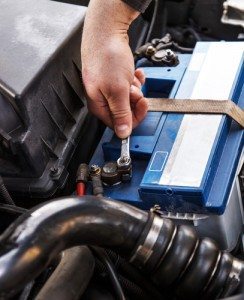The Lazy Way To Buy and Sell Cars For Profit ***Click Here***
The 2013 DIY Report by AutoMD.com found that 90 percent of DIYers choose to do their own repairs to save money. More than one-third of that money-saving crowd reported a year-over-year financial improvement, yet 79 percent said they are still doing their own repairs.
Granted, few of the 5,351 automobile owners surveyed did engine overhauls or rebuilt their transmissions, but performing seasonal maintenance yourself on your car will not only save money, but prevent major damage from occurring.
Beginner
It’s always more convenient and, frankly, just a matter of habit for most to take your car to a shop for simple things like changing oil and filter, replacing headlights, signal lights, and fuel filters. All of the aforementioned can be done with a decent socket set and a little effort.
Haynes Publishing sells DIY manuals for virtually every car in existence. The $20 spent on this will end up being the best investment you’ll make for your car. These manuals, among other things, outline maintenance recommended by each manufacturer and provide information on parts and installation specific to your vehicle.
Replacing a battery is fairly universal regardless of the vehicle’s make and model (excluding electric hybrids). Always detach the negative (black) cable first to avoid serious injury. Use a solution of baking soda and water to clean any corrosion in the tray. Clean the cables and connectors with a wire brush. When installing the new battery, connect the cables in reverse order: positive (red) first, negative second.
The only special tool you need to change oil is a filter wrench (which costs around $15). Jack your vehicle up so you can fit underneath. Use your manual to determine the type of oil and filter for specific seasons and locate the drain. Place a pan underneath, remove the oil cap, then the drain plug. Remove the old filter and replace it with the new one. Now just put the drain plug back on and put the new oil in.
These maintenance items sound simple because they are simple.
Novice
When that squeaking noise starts coming from underneath your vehicle, that is a sign that the brake pads need replaced. Waiting too long to fix the problem will make that squeak turn into grinding, then strong vibrating, then $500-plus to replace your whole brake system.
Think of brake pads the same way as bicycle brakes: they both use the same concept and function in the exact same way. You’ll need a jack, lug wrench, turkey baster (to remove brake fluid), gloves and a C-clamp to retract the piston. Older cars may have bolts that are rusted on and may require an impact wrench to get them off.
Once you remove the wheel, remove the slider bolts from the caliper to reveal the brake pads. The process can get a little tricky from here. Edmunds has a page that shows diagrams for everything, while Car and Driver has videos that demonstrate the process.
Master
People can wash a cut and put a bandage on themselves when necessary. Its unwise, however, to try and reset a compound fracture of your wrist and cast it up yourself. These are situation that you’ll need to seek professional help. The same philosophy applies to auto repairs.
It is not recommended to do major repairs on a car without the proper training. For example, you can take auto repair technician courses at Penn Foster or some other accredited institution. This will prepare you to do your own repairs and even make a little cash on the side doing minor repairs for your neighbors and friends.
DIY auto repairs save money, but also provide a enjoyable learning experience. You’ll appreciate your car much more when you do the repairs yourself.

Leave a Reply
You must be logged in to post a comment.